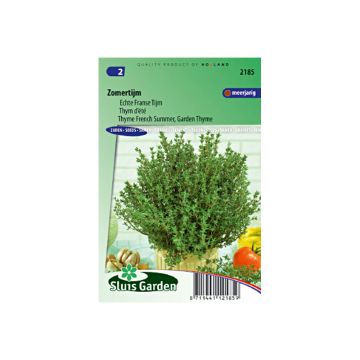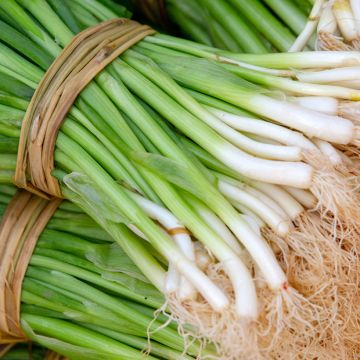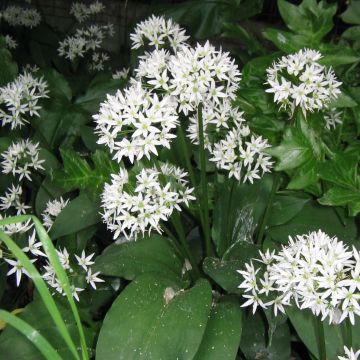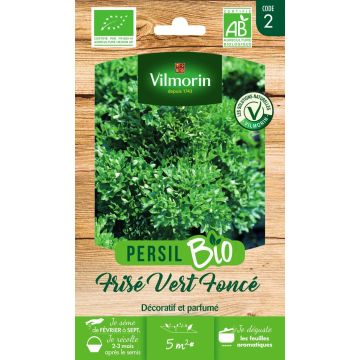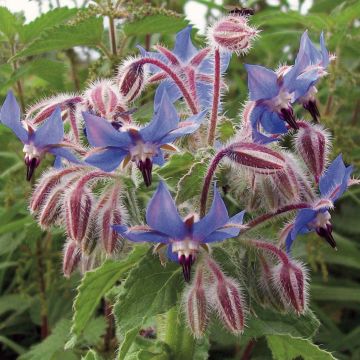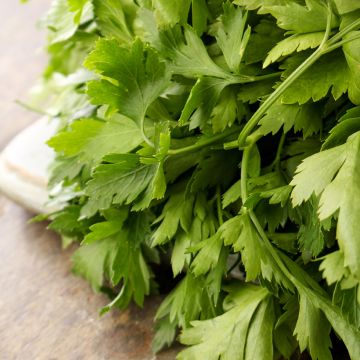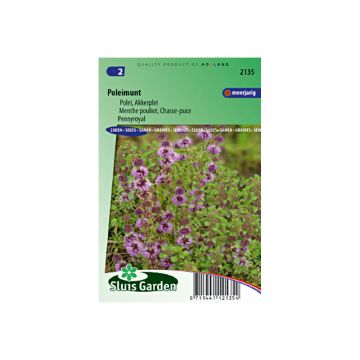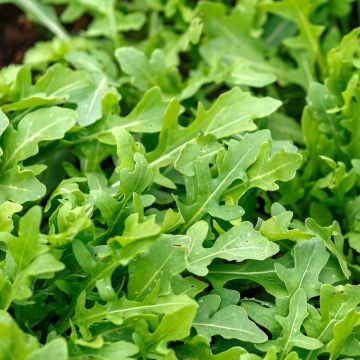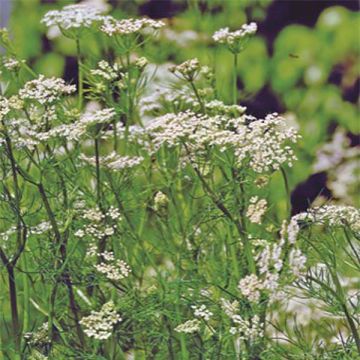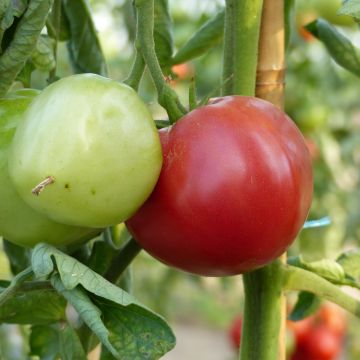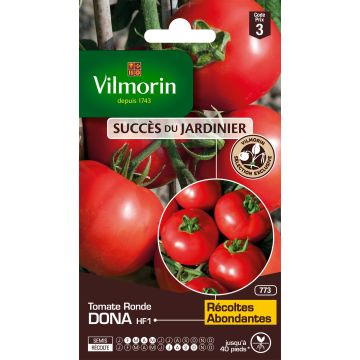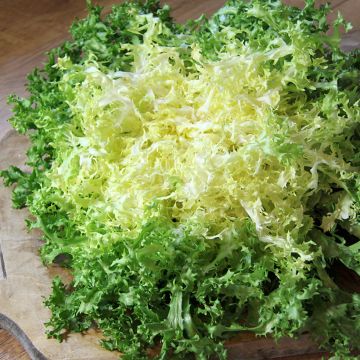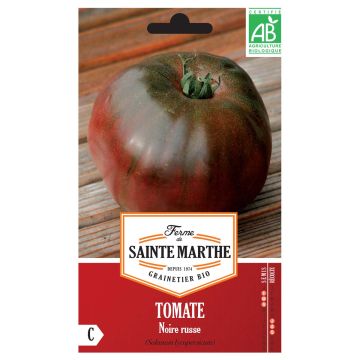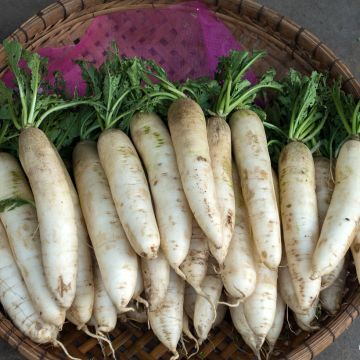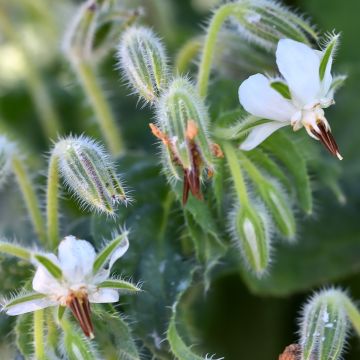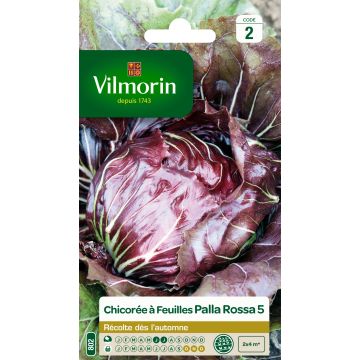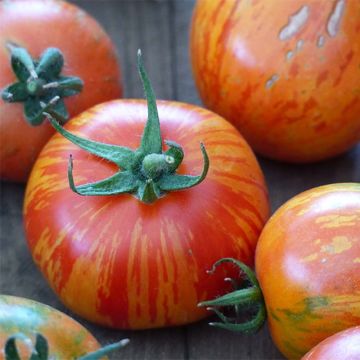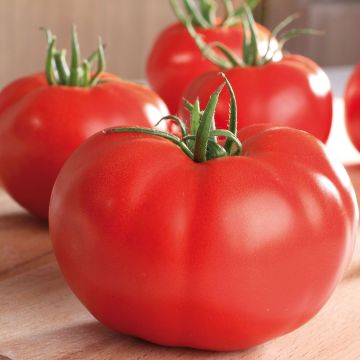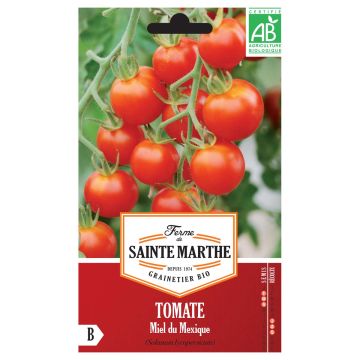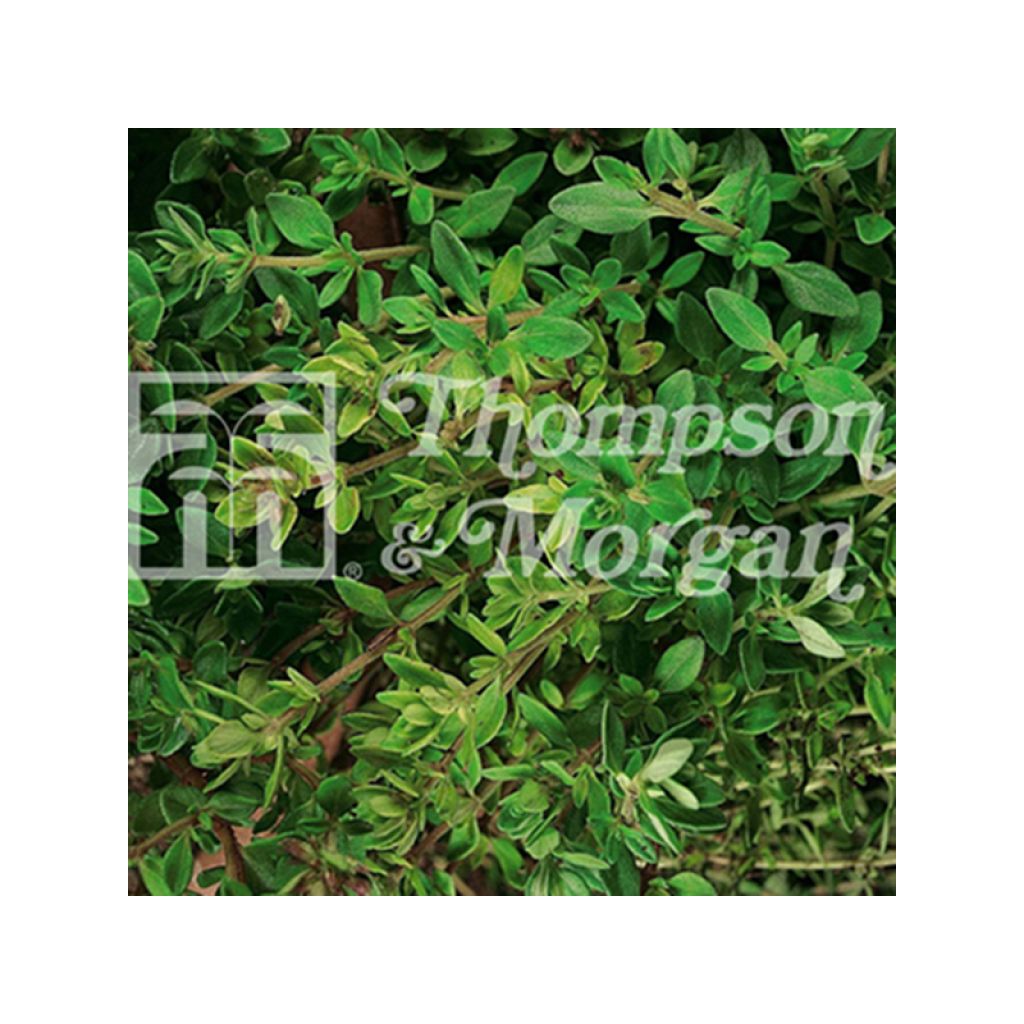

Thym Old English
Thym Old English - Thyme
Thymus vulgaris
Thyme
Not yet planted
Bernard ROSSI, 13/05/2016
This item cannot be shipped to the selected country
Dispatch by letter from €3.90
More information
Schedule delivery date,
and select date in basket
This plant carries a 6 months recovery warranty
More information
We guarantee the quality of our plants for a full growing cycle, and will replace at our expense any plant that fails to recover under normal climatic and planting conditions.
Seed-only orders are dispatched by sealed envelope. The delivery charge for seed-only orders is €3.90.
Description
Composant essentiel du Bouquet garni, le Thym est l’une des herbes aromatiques les plus utilisées en cuisine. C’est un grand classique, irremplaçable pour parfumer viandes, poissons et légumes. Il peut également être utilisé pour réaliser des infusions qui soulagent les maux digestifs et respiratoires. Semis de février à avril.
Originaire d’Europe occidentale et du sud, où il se rencontre parfois à l’état naturel, le Thym commun, également appelé Farigoule, est une plante vivace qui appartient à la famille des Lamiacées. Elle forme des petites touffes odorantes au feuillage vert grisé qui se parent, en été, de jolies petites fleurs dont la couleur varie de blanc au rose-mauve selon les variétés.
Le Thym est une aromatique résistante et facile à cultiver, qui affectionne les sols pauvres, légers voire caillouteux et bien drainés. Si votre terre est plutôt humide et argileuse, nous vous conseillons plutôt de le cultiver en pot où il se plaira très bien.
Récolte : Le Thym peut être récolté tout au long de l’année car ses feuilles sont persistantes. Sachant qu’il convient de le tailler pour lui conserver une belle forme compacte, profitez-en pour en faire provision pour les mois d’hiver !
Conservation : Le Thym se conserve traditionnellement par séchage. C’est une opération simple et rapide que vous pouvez remplacer par la congélation si cela vous apparaît plus pratique.
Le petit truc du jardinier : Au jardin, n’hésitez pas à mélanger les genres en installant quelques aromatiques comme le Thym au beau milieu de vos massifs de vivaces ou encore dans les rocailles. C’est très joli et les parfums, parfois puissants, des plantes aromatiques ont souvent la faculté d’éloigner les insectes susceptibles d’attaquer les végétaux un peu sensibles comme certains rosiers.
Report an error about the product description
Harvest
Plant habit
Foliage
Botanical data
Thymus
vulgaris
Lamiaceae
Thyme
Cultivar or hybrid
Perennial
Other Herb seeds
Planting and care
Semis :
Le Thym se sème de février à avril à une température se situant entre 13 et 16°. La germination prend généralement 18 à 24 jours.
Le semis s’effectue dans une terrine garnie d’un bon terreau pour semis, placée en pleine lumière. Les graines sont très légèrement enfouies et juste recouvertes d’une pincée de terreau ou de vermiculite. La terrine ne doit pas être couverte car le Thym craint l’humidité, maintenez le substrat humide mais non détrempé.
Lorsque les plantules vous semblent assez fortes pour être manipulées, effectuez un repiquage en godet et habituez progressivement vos jeunes plants à des conditions plus fraîches.
La transplantation au jardin ou en pot s’effectue lorsque les plants sont bien développés, ces derniers peuvent éventuellement passer leur premier hiver sous châssis froid.
Culture :
Le Thym est une aromatique résistante et facile à cultiver, qui affectionne les sols pauvres, légers voire caillouteux et bien drainés. Il convient de l'installer au soleil. Si votre terre est plutôt humide et argileuse, nous vous conseillons plutôt de le cultiver en pot où il se plaira très bien.
Côté entretien, procédez si besoin à un arrosage tous les 15 jours ou tous les mois si le pied est déjà bien installé. Une taille annuelle (sur le bois de l’année) lui conservera un joli port arrondi et trappu.
Seedlings
Care
Intended location
-
, onOrder confirmed
Reply from on Promesse de fleurs
Vegetable seeds
Haven't found what you were looking for?
Hardiness is the lowest winter temperature a plant can endure without suffering serious damage or even dying. However, hardiness is affected by location (a sheltered area, such as a patio), protection (winter cover) and soil type (hardiness is improved by well-drained soil).

Photo Sharing Terms & Conditions
In order to encourage gardeners to interact and share their experiences, Promesse de fleurs offers various media enabling content to be uploaded onto its Site - in particular via the ‘Photo sharing’ module.
The User agrees to refrain from:
- Posting any content that is illegal, prejudicial, insulting, racist, inciteful to hatred, revisionist, contrary to public decency, that infringes on privacy or on the privacy rights of third parties, in particular the publicity rights of persons and goods, intellectual property rights, or the right to privacy.
- Submitting content on behalf of a third party;
- Impersonate the identity of a third party and/or publish any personal information about a third party;
In general, the User undertakes to refrain from any unethical behaviour.
All Content (in particular text, comments, files, images, photos, videos, creative works, etc.), which may be subject to property or intellectual property rights, image or other private rights, shall remain the property of the User, subject to the limited rights granted by the terms of the licence granted by Promesse de fleurs as stated below. Users are at liberty to publish or not to publish such Content on the Site, notably via the ‘Photo Sharing’ facility, and accept that this Content shall be made public and freely accessible, notably on the Internet.
Users further acknowledge, undertake to have ,and guarantee that they hold all necessary rights and permissions to publish such material on the Site, in particular with regard to the legislation in force pertaining to any privacy, property, intellectual property, image, or contractual rights, or rights of any other nature. By publishing such Content on the Site, Users acknowledge accepting full liability as publishers of the Content within the meaning of the law, and grant Promesse de fleurs, free of charge, an inclusive, worldwide licence for the said Content for the entire duration of its publication, including all reproduction, representation, up/downloading, displaying, performing, transmission, and storage rights.
Users also grant permission for their name to be linked to the Content and accept that this link may not always be made available.
By engaging in posting material, Users consent to their Content becoming automatically accessible on the Internet, in particular on other sites and/or blogs and/or web pages of the Promesse de fleurs site, including in particular social pages and the Promesse de fleurs catalogue.
Users may secure the removal of entrusted content free of charge by issuing a simple request via our contact form.
The flowering period indicated on our website applies to countries and regions located in USDA zone 8 (France, the United Kingdom, Ireland, the Netherlands, etc.)
It will vary according to where you live:
- In zones 9 to 10 (Italy, Spain, Greece, etc.), flowering will occur about 2 to 4 weeks earlier.
- In zones 6 to 7 (Germany, Poland, Slovenia, and lower mountainous regions), flowering will be delayed by 2 to 3 weeks.
- In zone 5 (Central Europe, Scandinavia), blooming will be delayed by 3 to 5 weeks.
In temperate climates, pruning of spring-flowering shrubs (forsythia, spireas, etc.) should be done just after flowering.
Pruning of summer-flowering shrubs (Indian Lilac, Perovskia, etc.) can be done in winter or spring.
In cold regions as well as with frost-sensitive plants, avoid pruning too early when severe frosts may still occur.
The planting period indicated on our website applies to countries and regions located in USDA zone 8 (France, United Kingdom, Ireland, Netherlands).
It will vary according to where you live:
- In Mediterranean zones (Marseille, Madrid, Milan, etc.), autumn and winter are the best planting periods.
- In continental zones (Strasbourg, Munich, Vienna, etc.), delay planting by 2 to 3 weeks in spring and bring it forward by 2 to 4 weeks in autumn.
- In mountainous regions (the Alps, Pyrenees, Carpathians, etc.), it is best to plant in late spring (May-June) or late summer (August-September).
The harvesting period indicated on our website applies to countries and regions in USDA zone 8 (France, England, Ireland, the Netherlands).
In colder areas (Scandinavia, Poland, Austria...) fruit and vegetable harvests are likely to be delayed by 3-4 weeks.
In warmer areas (Italy, Spain, Greece, etc.), harvesting will probably take place earlier, depending on weather conditions.
The sowing periods indicated on our website apply to countries and regions within USDA Zone 8 (France, UK, Ireland, Netherlands).
In colder areas (Scandinavia, Poland, Austria...), delay any outdoor sowing by 3-4 weeks, or sow under glass.
In warmer climes (Italy, Spain, Greece, etc.), bring outdoor sowing forward by a few weeks.

































